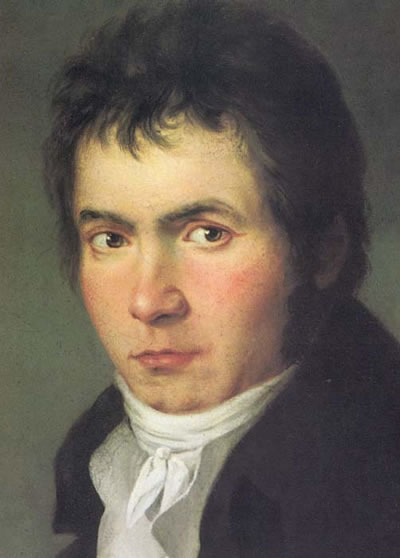|
||
|
The Emperor Concerto is the longest and grandest of the five piano concertos that Beethoven wrote. It is typical of his compositions from that period, in which he explored new ways of scaling up musical forms. Like many of his contemporary works it contains innovations in the writing, and creates a range of moods, from the assured heroic statements of the first movement, through the quiet reflective beauty of the second movement to the good humoured finale. The name "Emperor" was not Beethoven's, and its origin is unknown. It was popularised by Johann Baptist Cramer an English pianist, composer and publisher of the concerto. Certainly it was not refering to Napoleon Bonaparte, who had proclaimed himself Emperor in 1804. Vienna had been bombarded and finally occupied by the French in 1809 at the time when Beethoven was working on the score. Neither he nor his fellow citizens were admirers of their conquerors. During the siege Beethoven had moved to his brother's house so that he could shelter from the bombardment, but still managed to continue composing. The concerto was first played at a private concert in Vienna in 1811, with the Archduke Rudolf as the soloist. It had its public premiere in Leipzig. Beethoven's worsening deafness prevented him from playing the solo piano, and Friedrich Schneider, one of his pupils, undertook the task. The work was well received and one critic stated 'it is without doubt one of the most original, imaginative, most effective but also one of the most difficult of all concertos’. On 12 February 1812 Carl Czerny played the Vienna premiere, but this was less successful. The concert had been organised by the ‘Society of Noble Ladies for Charity and Fostering the Good and Useful’ as part of the festivities ordered by the city’s French conquerors. Most of the programme was made up of popular songs and light music and so Beethoven’s concerto, with its grand gestures and heroic outlook must have sounded incongrous and even dissident. Possibly the name Emperor was given to it by anti-French cynics attending the concert. The first movement opens with one of Beethoven's most radical innovations - a brilliant and virtuosic cadenza for the solo piano. By the conventions of the time concertos would begin with an orchestral exposition of the main musical ideas during which the soloist remained silent, or only participated sparingly. Moreover, in all previous concertos the cadenzas were placed towards the end of the movements, to give the soloist a chance to improvise and to have a final virtuosic display. A further interesting addition is an instruction to the soloist not to improvise but to play what was written, though this was not so radical a change. Previously Mozart had been unimpressed by the standard of improvisiation in Vienese concerts and had written out cadenzas for the concertos that he did not perform himself. After its dramatic start, the first movement follows a fairly standard sonata form outline, but is constructed on a large scale, with extensive development of motivic ideas. In contrast to the virtuosic grand first movement, the second movement is calm and serene. The strings play with mutes throughout in gentle dialog with the piano and wind instruments. The trumpets and drums are silent possibly expressing a very pressing desire for peace in a time of war. The final movement is uplifting and optimistic. It is in rondo form, and is filled with the sunny good humour that pervades much of Beethoven's work. The concerto remains the best known and most performed of all his concertos. The Emperor Concerto was performed by the Portobello Orchestra on the 1st December 2018. The soloist was Patrick Mattar, and the orchestra was conducted by Sam Jones. back |

